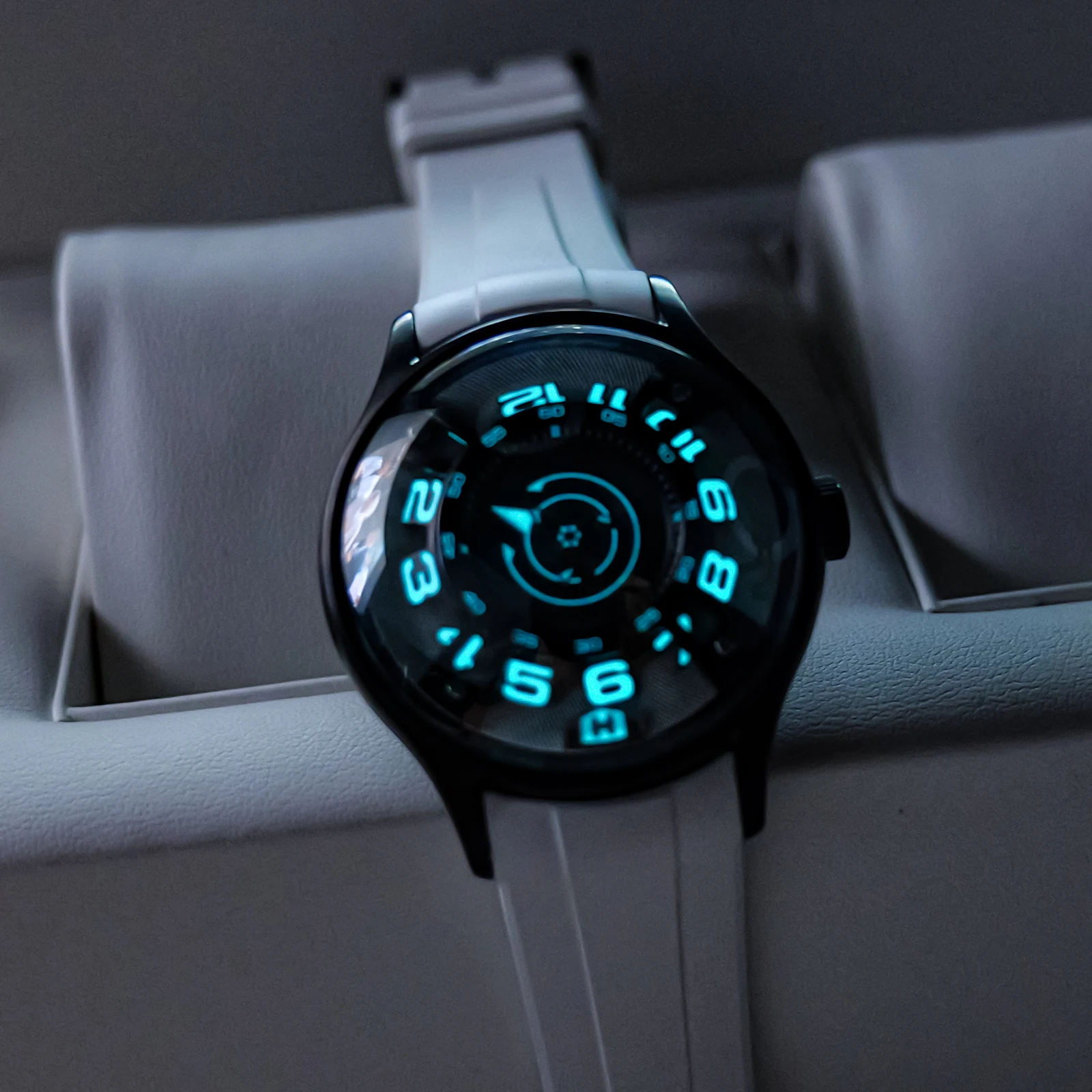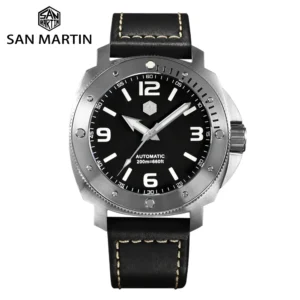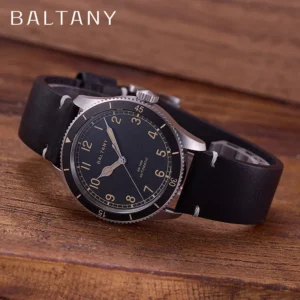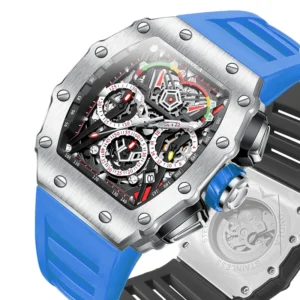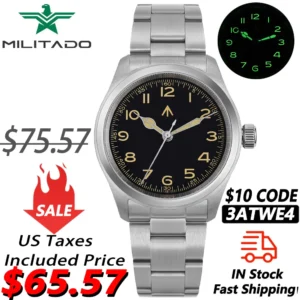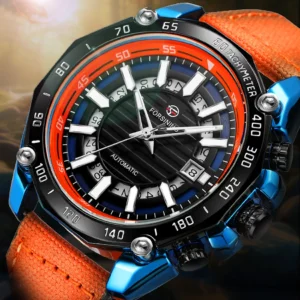Understanding the Critical Role of Luminosity in Tactical Timepieces
Luminosity in tactical watches isn’t merely a convenient feature—it’s a mission-critical element that can mean the difference between success and failure in high-stakes situations. When visibility is compromised, whether in nighttime operations, underwater missions, or darkened environments, the ability to read time and other critical information becomes paramount.
For military personnel, law enforcement officers, and tactical professionals, a watch that fails to provide adequate visibility in darkness creates dangerous vulnerabilities. In scenarios where synchronization and timing are essential, even seconds of uncertainty can compromise an entire operation. The consequences extend beyond mere inconvenience—inadequate luminosity can directly impact safety, coordination, and mission outcomes.
Throughout military history, luminous watches have played a crucial role in coordinating complex operations. During covert nighttime missions, tactical elements in automatic watches provided critical functionality when electronic devices might fail or compromise positions. Understanding what truly defines a tactical watch helps appreciate why luminosity stands among its most essential features.
This guide explores the primary technologies powering today’s tactical watch illumination—from traditional phosphorescent compounds to self-powered tritium solutions—and examines how these different approaches serve various operational requirements. We’ll analyze brightness, duration, reliability, and tactical considerations to help you determine which luminous solution best meets your specific needs.
The Science Behind Watch Illumination: How Luminous Materials Work
Watch illumination relies on two fundamentally different scientific principles: photoluminescence and radioluminescence.
Photoluminescence
This process involves materials that absorb light energy and then emit it slowly over time. These compounds—like Super-LumiNova—contain phosphors that store energy from ambient light and gradually release it as visible light. Think of these materials as tiny batteries that charge in light and discharge in darkness.
Radioluminescence
Unlike photoluminescent materials, radioluminescent substances don’t require external charging. Instead, they contain a radioactive isotope (most commonly tritium in modern watches) that emits low-energy beta particles. These particles strike a phosphor coating, creating continuous illumination without needing external light.
Several factors determine how well a luminous watch performs:
- Material quality: Higher-grade luminous compounds contain more phosphorescent particles
- Application thickness: Thicker applications store more energy and glow longer
- Color: Green luminous materials typically appear brightest to the human eye, while blue provides better contrast in some conditions
Our eyes’ natural night vision adaptation affects how we perceive these glowing elements. The human eye is most sensitive to green-yellow wavelengths in low-light conditions, which explains why many tactical automatic watches favor these colors for optimal visibility.
Evolution of Watch Lume: From Radium to Modern Solutions
The journey of luminous watch technology began with radioactive radium paint, which provided excellent brightness but posed serious health hazards. Early military timepieces used this material extensively, offering unprecedented nighttime visibility that revolutionized tactical operations.
As safety concerns emerged, watchmakers transitioned to tritium-based paints, which offered reduced radioactivity while maintaining reliable illumination. This intermediate step maintained the advantages of self-powered illumination while significantly reducing radiation exposure.
The next major advancement came with non-radioactive photoluminescent compounds. Initially, these zinc sulfide-based materials (marketed as “Luminova”) required frequent light charging and dimmed quickly. However, continued research led to strontium aluminate-based compounds that dramatically improved both brightness and longevity.
Modern tactical watches now employ either advanced photoluminescent materials like Super-LumiNova or sealed tritium gas tubes, each representing the pinnacle of their respective technologies. These developments reflect the watch industry’s commitment to enhancing the crucial feature of low-light visibility while ensuring safety.
Automatic watches with tactical features now benefit from these technological advances, providing reliability that earlier generations could only imagine.
Super-LumiNova: The Industry Standard Photoluminescent Material
Super-LumiNova has become the dominant photoluminescent technology in premium tactical watches, replacing older zinc sulfide compounds with more efficient strontium aluminate-based materials. This non-radioactive substance provides exceptional initial brightness when properly charged with light.
Grades and Variants
Super-LumiNova comes in several grades that determine performance:
- C1: Standard grade with moderate brightness
- C3: High-performance grade with maximum brightness (green emission)
- BGW9: Blue-emitting variant with slightly lower brightness but better daytime aesthetics
- X1: Enhanced formulation with improved performance, particularly longevity
The application technique significantly impacts performance. Hand-applied lume by master watchmakers typically achieves greater thickness and uniformity than mass-production methods, resulting in superior brightness and duration.
Several watch manufacturers offer their own proprietary formulations with similar composition:
– Seiko’s LumiBrite
– Rolex’s Chromalight
– Luminova (original version)
Advantages of Super-LumiNova:
- Exceptionally bright initial glow when fully charged
- Completely non-radioactive and environmentally safe
- Available in multiple colors for tactical differentiation
- Can be applied to dials, hands, and bezels in various patterns
Limitations of Super-LumiNova:
- Requires exposure to light source before glowing
- Brightness decreases significantly over hours (typically 60% dimmer after 2 hours)
- Performance varies dramatically between watches even from the same manufacturer
- Optimal charging requires relatively bright light sources
When properly implemented with thick application and high-grade material, Super-LumiNova can provide readable illumination for 8+ hours, though at significantly reduced brightness levels after the first few hours. The technology remains ideal for rugged automatic watches used in environments with intermittent access to light sources.
Tritium Gas Tubes (GTLS): The Self-Powered Alternative
Tritium gas tubes represent the alternative approach to watch illumination, using glass tubes filled with radioactive tritium gas and coated internally with phosphor. When tritium atoms decay, they emit low-energy beta particles that strike the phosphor coating, creating constant illumination without requiring external charging.
These self-contained illumination systems are officially called Gaseous Tritium Light Sources (GTLS) and provide distinct advantages in extended low-light situations.
Understanding Tritium Brightness Ratings
Tritium tubes come in standardized brightness ratings:
– T25: Contains 25 millicuries of tritium, the maximum allowed in many countries
– T100: Contains 100 millicuries of tritium, offering approximately 4× brightness of T25 tubes
These glass tubes are strategically placed at hour markers, on watch hands, and sometimes at bezel positions. Unlike painted lume, tritium tubes maintain consistent thickness and cannot be applied to large dial areas.
Advantages of Tritium Tubes:
- Provides constant illumination for years without requiring charging
- Maintains consistent brightness throughout a night operation
- Multiple color options allow for functional differentiation
- Completely reliable in extended darkness scenarios
Limitations of Tritium Tubes:
- Lower initial brightness than freshly-charged Super-LumiNova
- Gradual dimming over many years (half-life approximately 12 years)
- Higher manufacturing costs and more complex implementation
- Limited to specific placement points rather than custom designs
The safety of tritium tubes in watches has been thoroughly established. The beta particles emitted cannot penetrate the glass tubes, let alone the watch crystal, making them safe for everyday wear. Modern tritium implementations are regulated and pose no meaningful radiation risk to users.

Head-to-Head: Super-LumiNova vs. Tritium for Tactical Applications
When evaluating luminous technologies for tactical use, the choice between Super-LumiNova and tritium often depends on specific operational requirements:
| Performance Aspect | Super-LumiNova | Tritium Tubes |
|---|---|---|
| Initial Brightness | Excellent (when freshly charged) | Good (consistent) |
| After 1 Hour | Good | Good |
| After 8 Hours | Fair to Poor | Good |
| After 12 Hours | Poor | Good |
| Requires Charging | Yes | No |
| Visibility in Total Darkness | Diminishes over time | Consistent for years |
| Color Options | Multiple | Multiple |
| Application Versatility | High | Limited to tubes |
| Cost Implementation | Lower | Higher |
For short-duration night operations with preparation time, Super-LumiNova often provides superior initial visibility. However, tritium excels in extended operations, unexpected darkness scenarios, and situations where charging isn’t possible.
Tactical considerations extend beyond mere brightness. Some operations require stealth where minimal illumination is preferred, while others need maximum visibility. The reliability factor cannot be overstated—in critical situations, the predictable consistency of tritium often outweighs the higher initial brightness of Super-LumiNova.
Many field-tested automatic watch designs incorporate both technologies, using tritium for essential markers and Super-LumiNova for larger dial elements, achieving a strategic balance between brightness and reliability.
Tactical Applications: How Luminosity Serves in the Field
Luminous watch components serve multiple tactical functions beyond basic timekeeping:
Time Coordination
During synchronized operations, precise timing can determine success or failure. Clear time visibility allows team members to coordinate actions without radio communication or visible light sources that might compromise positions.
Navigation Reference
Rotating bezels with luminous markings serve as makeshift compasses or timing tools. When properly aligned, these can track elapsed time, mark bearings, or serve as backup navigation references when electronic equipment fails.
Position Identification
In team settings, luminous watches can function as personal markers in complete darkness. Different colored lume on team members’ watches allows for quick identification without verbal communication.
Environmental Adaptation
Operations spanning both daylight and darkness require timepieces that transition seamlessly between lighting conditions. The instantaneous readability provided by quality luminous elements eliminates adjustment periods that might otherwise create vulnerability.
The functionality of field watches in combat zones demonstrates how luminosity becomes more than convenience—it transforms into a tactical tool with multiple applications. Whether for timing explosive charges, coordinating infiltration movements, or monitoring decompression stops in maritime operations, reliable illumination directly impacts operational effectiveness.
Key Luminosity Features in Tactical Watch Design
Tactical watch design incorporates luminous elements with specific attention to operational requirements:
Maximized Surface Area: Hands with broader luminous sections provide better visibility, while hollowed or “skeleton” hands reduce luminous material and visibility.
Differentiated Markings: Distinct shapes or colors for hour, minute, and second hands allow instant reading without confusion—critical when seconds count.
Bezel Implementation: Luminous bezel markings enable timing functions in darkness, from elapsed time tracking to countdown monitoring.
Clarity Enhancements: Anti-reflective coatings reduce glare during daytime while improving the contrast of luminous elements at night.
Protected Elements: Recessed luminous markers prevent damage during impact and preserve illumination capability through rough handling.
Functional Color Coding: Strategic use of different colored luminous materials helps distinguish between critical functions (timing bezel vs. hour markers).
The optimization of tactical watch dial layouts represents careful engineering that balances maximum visibility with functional clarity. The most effective designs maintain readability in milliseconds rather than requiring interpretation.
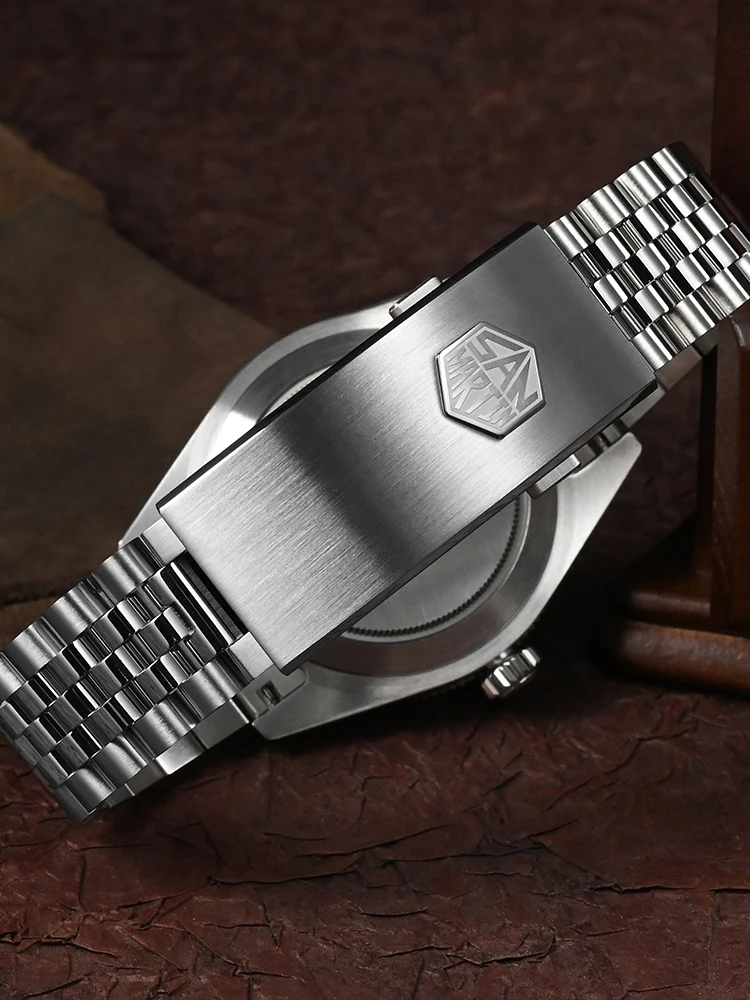
Evaluating Luminosity When Choosing a Tactical Automatic Watch
When assessing the luminous performance of a tactical watch, look beyond marketing claims to these key considerations:
Material Specification: Quality manufacturers disclose exactly what luminous technology they use—whether Super-LumiNova (with grade) or tritium (with T-rating).
Application Quality: Thick, even application of luminous material generally outperforms thin, inconsistent application. Examine close-up images for uniformity.
Strategic Placement: Effective tactical watches prioritize luminosity on essential elements—especially minute and hour hands—rather than decorative components.
Testing Methods: To evaluate Super-LumiNova, charge the watch under bright light, then observe its performance after 5 minutes, 1 hour, and several hours in darkness.
Real-World Images: “Lume shots” in marketing materials often show watches at peak brightness. Look for time-lapse images showing performance after several hours.
Remember that specifications alone don’t tell the complete story. A modest luminous material applied expertly often outperforms premium materials with poor application. Our collection of automatic field military watches demonstrates how proper implementation enhances functional visibility.
Brands Known for Exceptional Luminosity Performance
Certain watch manufacturers have established reputations for superior luminous implementations:
Outstanding Tritium Implementations
Several brands have mastered tritium tube implementation, positioning multiple tubes strategically for optimal readability. The brightness differentiation between hour markers and hands creates intuitive time-telling even in absolute darkness.
Premier Super-LumiNova Applications
Some watchmakers achieve remarkable Super-LumiNova performance through proprietary application techniques. These involve multiple layers of luminous material, creating exceptional brightness and duration that significantly outperforms standard applications.
Innovative Hybrid Approaches
The most advanced tactical watches sometimes combine both technologies, using tritium for critical markers that require constant visibility and Super-LumiNova for larger surfaces that benefit from maximum initial brightness.
Many of these exceptional luminous implementations can be found in our collection of military-inspired automatic watches, where form follows function and visibility remains paramount.
Military Inspired Automatic Watches, Rugged Automatic Watches, Tactical Automatic Watches
Price range: $852.14 through $994.60 Select options This product has multiple variants. The options may be chosen on the product pageBronze Automatic Watches, Military Inspired Automatic Watches, Professional Spec Dive Watches
Price range: $1,442.21 through $1,442.82 Select options This product has multiple variants. The options may be chosen on the product pageClassic Pilot Watches, Military Inspired Automatic Watches
$561.00 Select options This product has multiple variants. The options may be chosen on the product pageRugged Automatic Watches, Unique Automatic Watches
Price range: $228.96 through $231.10 Select options This product has multiple variants. The options may be chosen on the product pageClassic Field Watches, Military Inspired Automatic Watches
Price range: $280.87 through $338.51 Select options This product has multiple variants. The options may be chosen on the product pageAutomatic Skeleton Watches, Military Inspired Automatic Watches, Unique Automatic Watches
$191.88 Select options This product has multiple variants. The options may be chosen on the product page
Maintaining and Maximizing Luminous Performance
To get the best performance from your watch’s luminous elements:
For Super-LumiNova Watches:
- Optimal Charging: Expose to direct sunlight or bright LED light for 30-60 seconds before use in darkness
- Avoid Diminishing Returns: Extended charging beyond 2 minutes provides minimal additional benefit
- UV Light Boost: UV flashlights can quickly charge luminous materials in field conditions
- Regular Cleaning: Keep the crystal clean to maximize light transmission to luminous elements
For Tritium Watches:
- Understand Natural Decay: Expect approximately 5-6% reduction in brightness every year
- Tube Protection: Avoid impacts that might crack tritium tubes, compromising their performance
- Service Options: Some manufacturers offer tritium tube replacement during regular service intervals
General Maintenance:
- Protect from Harsh Chemicals: Some cleaning agents can damage luminous materials over time
- Watch for Deterioration: Flaking or uneven appearance in luminous material indicates degradation
- Professional Assessment: Include luminous evaluation during regular service intervals
When properly maintained, quality luminous materials can maintain functional visibility for decades, though tritium will gradually dim while Super-LumiNova’s performance remains relatively constant if the application stays intact.
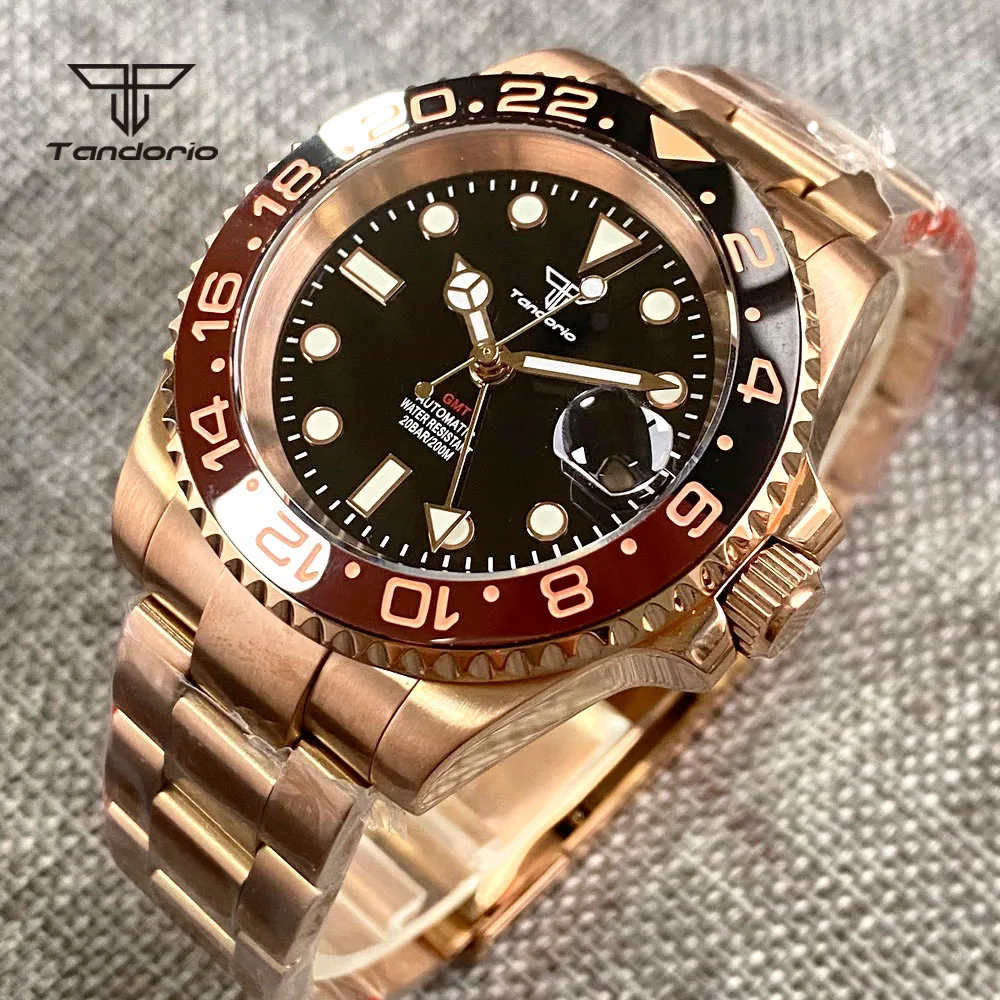
Do Different Tactical Environments Require Different Luminous Solutions?
Different operational environments create unique challenges for watch luminosity:
Marine/Underwater Operations
For diving applications, initial brightness matters less than consistent visibility at depth. Tritium often excels here as it doesn’t require pre-charging before descent. The pressure resistance of the luminous application becomes critically important, as poor implementation can fail under extreme pressure.
Desert/High-Brightness Environments
In desert environments, watches must transition from intense sunlight to profound darkness. Super-LumiNova benefits from abundant charging opportunities but can struggle with rapid light adaptation. Special consideration for daytime readability alongside night performance becomes essential.
Arctic/Extreme Cold
Extreme cold environments present challenges for both technologies. Some photoluminescent materials exhibit reduced performance in sub-zero temperatures, while tritium’s gas density changes slightly. High-quality implementations of either technology can overcome these limitations.
Urban Tactical Operations
In urban settings where light sources are intermittent, the self-charging nature of Super-LumiNova may provide advantages, continuously recharging from ambient light sources. The rapid light-to-dark transitions favor watches with excellent contrast in all conditions.
The engineering of military watches for extreme conditions must account for these environmental factors, ensuring reliable performance regardless of operational theater.
Can a Watch Be Too Bright? Tactical Considerations for Luminosity
While brightness seems inherently beneficial, tactical scenarios sometimes require subtlety over intensity.
Light Discipline: In covert operations, excessive watch brightness can compromise position or night vision adaptation. What makes a watch excellent for search-and-rescue might create vulnerability during surveillance missions.
Adjustable Solutions: Some tactical watches feature mechanisms to control luminosity, from rotating bezels that cover luminous elements to tactical sleeves that block light when needed.
Role-Specific Brightness: Different team roles may require different luminosity profiles. Communication specialists coordinating timed transmissions need constant bright reference, while forward observers might require minimal illumination to preserve night vision.
Contextual Brightness: The ideal brightness depends on the operating environment. Urban settings with ambient light pollution require different luminosity than wilderness deployments under starlight conditions.
Finding the right balance between visibility and discretion remains crucial for tactical timepieces. The best tough watch cases incorporate features that protect luminous elements while sometimes allowing controlled exposure based on operational needs.
Frequently Asked Questions About Watch Luminosity
How long does Super-LumiNova typically glow?
A quality Super-LumiNova application remains visible to dark-adjusted eyes for 8-10 hours, though at greatly reduced brightness after the first few hours. The initial 30-60 minutes provide the brightest illumination.
Is tritium in watches dangerous?
No. The tritium in watch tubes is completely sealed and emits only beta particles that cannot penetrate the tube walls, watch crystal, or skin. The amount used is minimal and poses no health risk to wearers.
Can luminous materials be restored or replaced?
Yes. Super-LumiNova can be professionally reapplied during servicing, restoring full brightness. Tritium tubes can be replaced, though this is typically more expensive and requires specialized service.
Do automatic watches require batteries for their lume?
No. Both Super-LumiNova and tritium function without batteries. Super-LumiNova charges from ambient light, while tritium is self-powered through radioactive decay.
How does extreme temperature affect lume performance?
Extreme cold temporarily reduces the brightness of some photoluminescent materials, while extreme heat has minimal effect. Tritium performance remains more consistent across temperature ranges.
What’s the difference between T25 and T100 tritium?
T100 contains approximately four times the tritium gas as T25, resulting in noticeably brighter illumination. T25 meets regulatory requirements in more countries, while T100 may face import restrictions in some regions.
Making the Right Choice for Your Operational Needs
Selecting between luminous technologies ultimately depends on your specific requirements and operational context. Consider these key factors:
Mission Duration: For short-night operations with preparation time, Super-LumiNova’s initial brightness advantage may be preferable. For extended operations or unpredictable conditions, tritium’s consistency becomes invaluable.
Recharge Availability: If your activities allow exposure to light sources throughout the day, Super-LumiNova continuously recharges. In prolonged darkness scenarios, tritium eliminates the need for external charging.
Brightness Requirements: For reading detailed information or operating in extremely dark conditions, the initial brightness of quality Super-LumiNova may be advantageous. For general time-telling, tritium provides sufficient illumination.
Service Life: Consider how long you’ll use the watch. Super-LumiNova maintains consistent performance for decades if properly applied, while tritium gradually dims over its 12-year half-life.
The ideal tactical watch often incorporates both mechanical reliability and appropriate luminous technology. Understanding these illumination systems helps ensure your timepiece performs when visibility matters most—whether in professional tactical scenarios or everyday adventures where reliability counts.
At Sharp Aspect, we recognize that luminosity represents more than a convenient feature—it’s a critical tool for those who rely on their timepieces in challenging conditions. The perfect balance of brightness, duration, and reliability transforms a watch from mere accessory into essential equipment.

